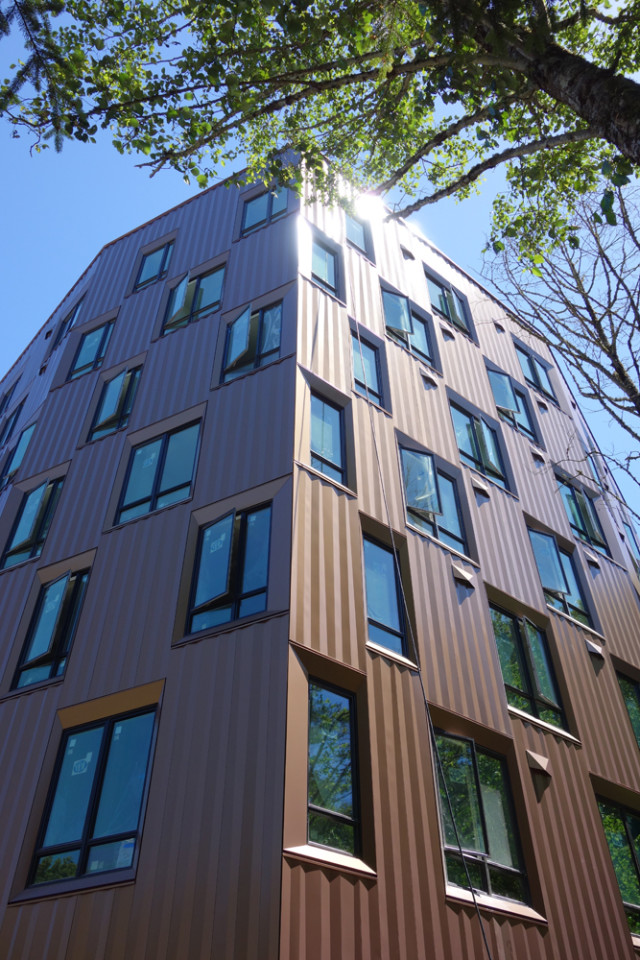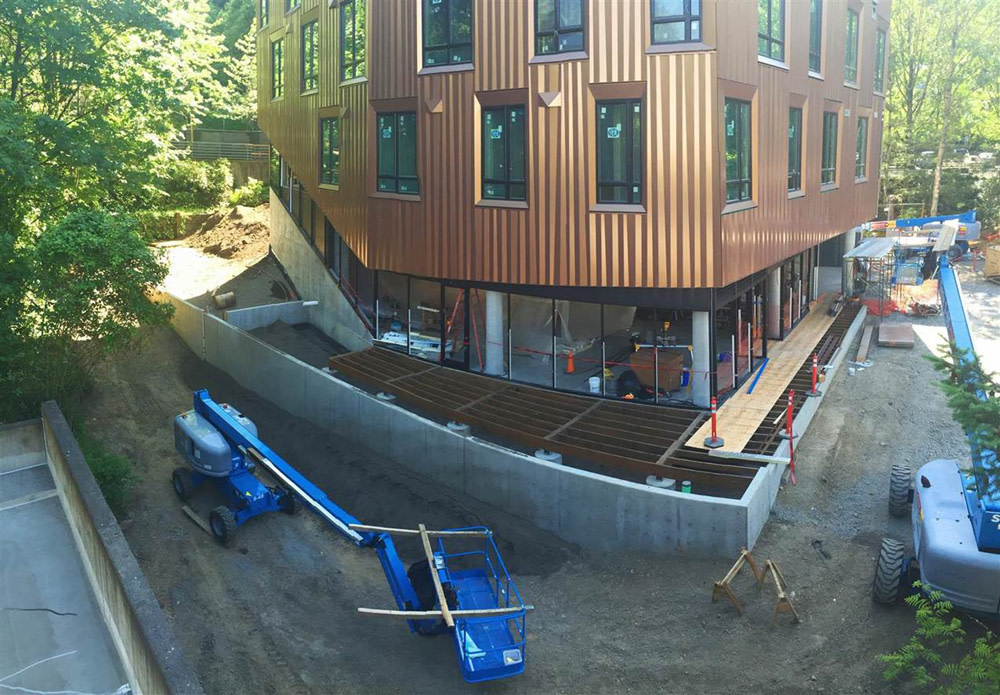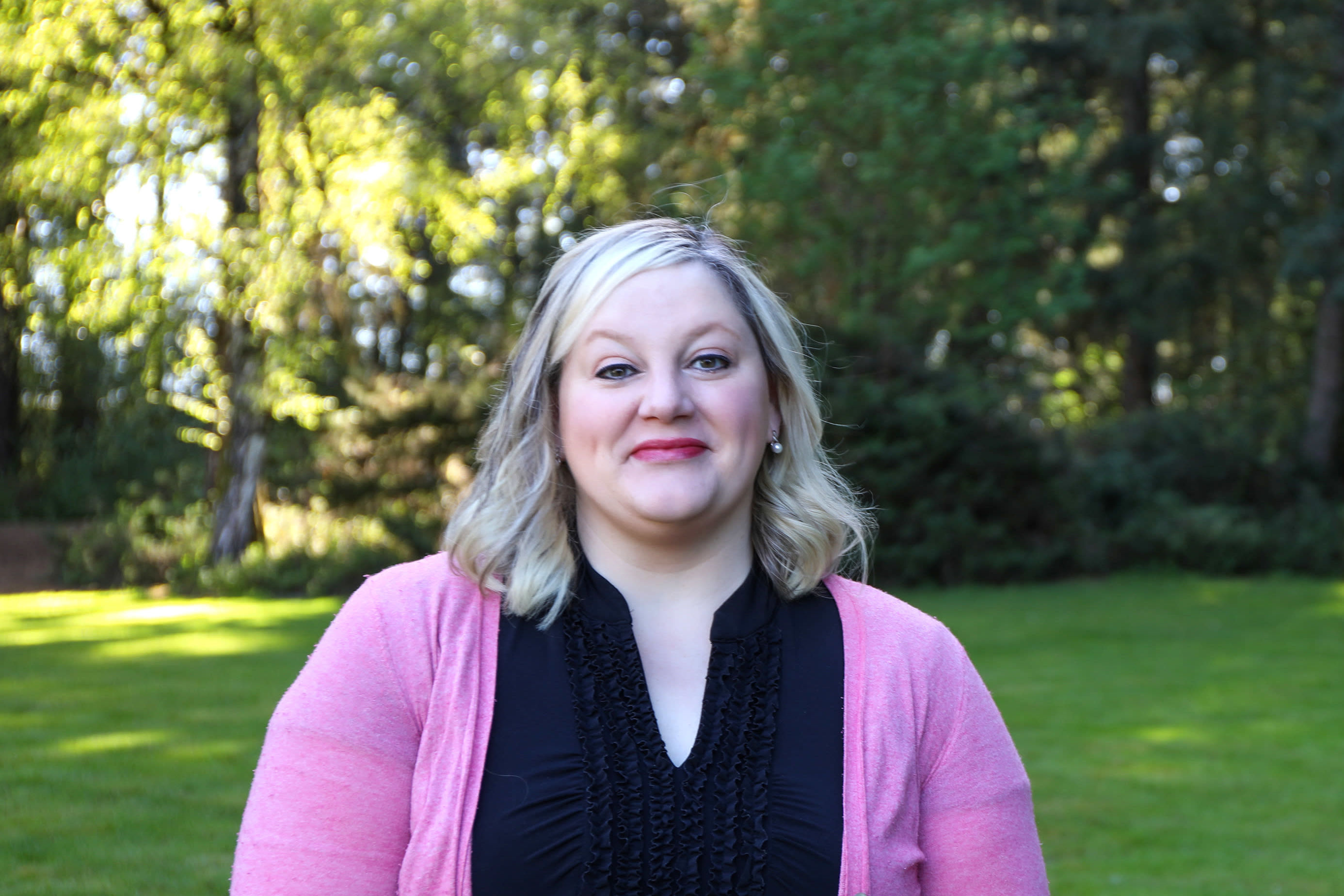Step Inside Tree House, the New Woodsy-Modernist Microapartments by OHSU

A rendering of a TreeHouse interior. Courtesy Lever Architecture/Project.
It’s one of Portland’s notable urban paradoxes: Oregon Health Sciences University, the city’s largest single employer and one of it most important institutions, sits atop lofty Marquam Hill. Housing options in the immediate area are few in number and, aesthetically, limited largely to aging last-century apartment complexes. (Transportation is a whole other story—the Hill’s relative isolation motivated the controversial 2006 launch of the aerial tram to OHSU’s South Waterfront expansion.)

Courtesy Lever Architecture/Project
Enter Tree House, a new 69-unit rental apartment building with modest floor plans and outsized design ambitions. Currently under construction, the octagonal wedge clad in a vaguely arboreal metal skin nods to Marquam’s woodsy surroundings, but is tailored to a highly urban live/work/no-commute lifestyle.
“It’s the only privately owned piece of property within the OHSU zoning district,” says Anyeley Hallova of the development firm project^, which remade the former site of the Ronald McDonald House after the latter organization moved to new digs last year. “Some people who work in a hospital setting really need immediate access.” The building sits on well-trafficked US Veterans Hospital Road, and aims to strike a balance between the natural bustle of a teaching hospital and the surrounding second-growth forest.
Thomas Robinson of Lever Architects designed a building with no firm distinction between back and front—“in the round,” as he puts it—taking advantage of the site’s mandated set-backs to create ample glazing on all sides. (Floor-to-ceiling windows also help amplify the studios and one-bedroom flats, which range between about 350 and 500 square feet. A single seventh-floor two-bedroom comes in at just over 800.) The building nestles into its complex hillside site. “We really wanted to place the building in the forest, to embed it in the forest,” Robinson says. A bridge walkway connects the main entrance to the outside world, while the eight exterior corners, each a subtle meeting of non-horizontal angles, echo the core of a sawn log.

Courtesy Lever Architecture/Project
“We really aimed to create a place where people could live and work but be in nature,” says Robinson, a veteran of both Portland’s Allied Works and Switzerland’s Herzog & De Meuron.
With construction on track for August completion, Tree House should open to tenants on Sept 1. The single retail space doesn’t yet have a tenant, but Hallova says both national and local prospects have expressed interest. The goal, she says, is to activate the large ground-level deck, both as a “second living room” for tenants and a community asset for an area lacking in gathering places.
“We’ve worked to create a lot of layers here,” Hallova says, “a warm, inviting space, with lots of textures, to contrast with the hospital environment a lot of people who use the site will work in day to day.”

Courtesy Lever Architecture/Project




